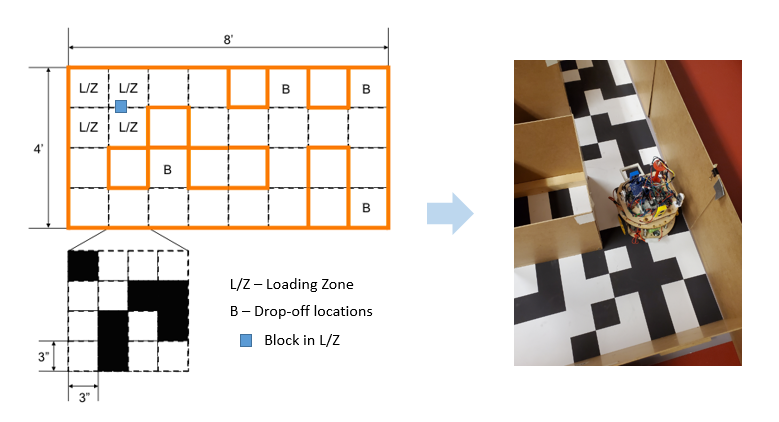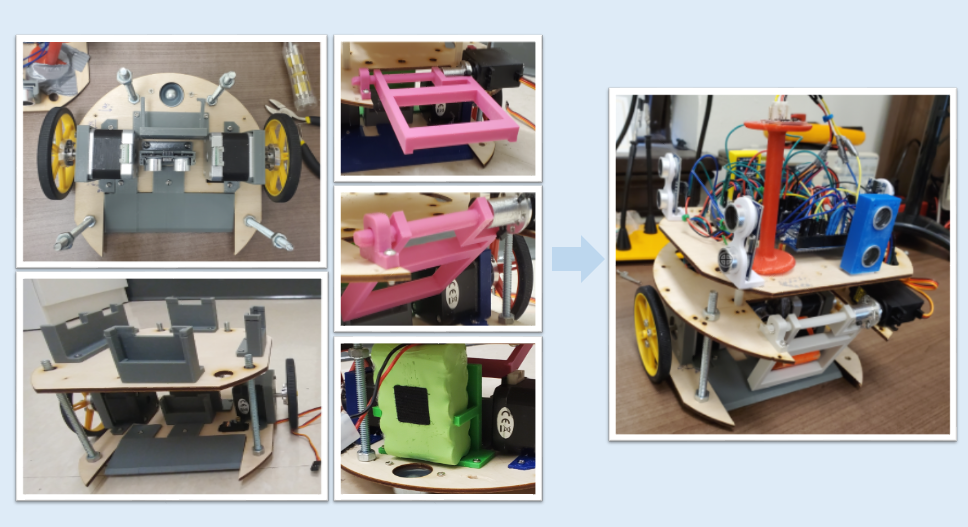In March 2020, as the COVID-19 pandemic intensified in Canada, all our courses quickly moved online to allow students to complete the term. This rapid transition to online learning posed several challenges and as the winter semester wrapped up, both students and faculty had ideas about how to make things better in the fall. Professor Sinisa Colic (MIE) spent the summer reimagining MIE444, a mechatronics design course, generating new ways of teaching so that the in-person course experiences would be retained in the online delivery format. The many hours of planning and troubleshooting have paid off as the term finishes up with the autonomous rover competition the class has been working towards.
In MIE444, students form teams to design and program an autonomous rover that can navigate a maze to find, pick up and drop off a block at one of several randomly designated delivery points. In a normal year, this means a lot of hands-on collaboration and late nights for students in the MC402 lab trialling their rovers and troubleshooting their code.

“With students not being able to come to campus and access all of the same tools, I knew we would need to change up the design and prototyping process this year,” Colic explained. “Instead of each team building their design we made it into a more collaborative process.”
Student teams presented their rover designs to the class and then voted for which one the teaching team should build. The class then worked together over several design iterations to adjust the winning design to be as effective as possible in the final challenge. What resulted in the end was a hybrid design incorporating aspects from the top two teams.

“This adjustment actually made the experience closer to what students will encounter in the workplace, where the time and resources to make every design option are not usually available” Colic added.
Colic also had to rethink how students could test their code and see how their rover would function in a real maze, as they would no longer have access to MC402 to run tests. Instead of dropping their rover into the maze to test it out, Colic recruited course TAs Ian Bennett and Demi Niu to develop simulators for students to test their navigation algorithms. The student teams used the simulators to test their code and see a visualization of how the rover would function based on how they programmed it.

Following the testing, students could submit their code to be tested in the real maze to obtain vital feedback. Colic’s dedicated TA team spent long hours in MC402 loading the rover with the code provided by the student teams to see how it preformed. The trial runs were streamed live over Blackboard Collaborate (see video below) with the recording option enabled to allow students to review the performance in detail to extract valuable feedback in preparation for the future trial runs.
“This is a piece I will continue to use in the course going forward,” Colic said, “It’s very convenient for students to use and allows for quick troubleshooting with their code.”
Colic’s online interpretation of MIE444 has been a great success and is a fantastic representation of our innovative and adaptable engineering community. Students have been pleasantly surprised with how well this hands-on design course has translated to the online world and Colic is pleased to have discovered tools that will make life easier for his students when in-person classes resume.
“Overall, I’m satisfied with how the course transitioned online, and I’m so proud of how well my students have managed,” Colic said, “Of course there was a lot of help that went into making this course a success: my amazing team of TAs (Ian Bennett, Justin Kim, Armin Eshaghi, Demi Niu, Jacky Lau and Christopher Lucasius); Max Giuliani and Colin Harry at the Myhal Light Fabrication Facility and Tom Bernreiter and the MIE Mechatronics team. It wouldn’t have come together without them.”
-Published December 15, 2020 by Lynsey Mellon, lynsey@mie.utoronto.ca